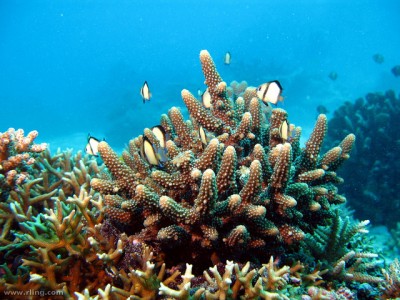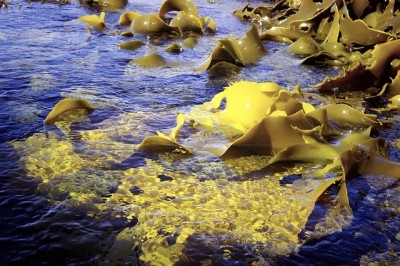There has been a complication in scientists’ attempts to persuade the world about the importance of acting on climate change: how to explain why global warming seems to have paused. Indeed, warming since the turn of the century has not been at the rate seen in the previous decades, and this is despite the amount of carbon dioxide in the atmosphere ever increasing.
But a new study published in the journal Science indicates that our oceans may be responsible, suggesting the Atlantic Ocean is sucking in excess heat and delaying further warming on land. It is a useful reminder that while we focus on the effects of increased temperatures on land, our oceans are undergoing substantial changes as well.
The latest report from the Intergovernmental Panel on Climate Change (IPCC) outlined a range of potential changes to marine ecosystems, with overall economic losses from a 2 degree global temperature increase by 2050 estimated at between US$10-31 billion.
The Great Barrier Reef is probably the most emblematic example of our changing oceans, with UNESCO’s World Heritage Committee issuing warnings over the impacts of overfishing, agricultural run-off and dredging sediment, along with rising temperatures.
But our temperate regions are in just as much danger. In fact, according to Dr Chris Fulton, marine biologist at the Australian National University, scientists are greatly concerned about the marine regions of south-east and south-west Australia.
“Both of those places have already seen the largest anomalies,” said Dr Fulton. “If you’re going to talk about temperature then the largest thermal anomalies to date have been recorded in marine waters off south-west Australia [with] the marine heatwave there in 2011.
“Off south-east Australia, it’s not so much about marine heatwaves in summer but certainly the story seems to be around warmer winters. And that’s leading to possible migrations of species into places they’ve never been able to persist before because it’s been too cold for them.”
The waters of eastern Australia are dominated by the East Australian Current, which runs along the entire eastern coast bringing warm tropical water to the Tasman Sea. This current has remained constant since the last Ice Age but in the past decade has gotten stronger and extended further south. Waters off the coast of Tasmania are now experiencing average temperatures 1.5 degrees higher than 50 years ago. This warmer water not only affects the local ecosystems but brings new species migrating south along with it. And these species can include new predators.
The long-spine sea urchin, a native of eastern mainland Australia, has migrated south resulting in massive impacts on the ecosystems of coastal Tasmania. According to Dr Fulton, this has resulted in something known as a trophic cascade.
“The urchin has now got warm enough water to live in Tasmanian waters through the winter,” said Dr Fulton. “The trophic cascade they’ve created then is they’ve now started to eat a lot of the kelp and other things that help kelp to grow. [Remove] kelp forests and the consequence of that is all the fish and other commercially important vertebrates like lobsters that depend on kelp to survive are also going out the window.”
It is already challenging enough for government and industry to react to the effects of global warming on land, but for marine ecosystems it is harder still because the oceans remain so understudied. For example, attempts to raise the critically endangered Southern Bluefin Tuna in captivity continue to fail.
“We don’t really have a good grasp of what most of the life cycles of things that we eat from the sea actually go through in terms of habitats,” he explains. “The more we dig into species the more we realise they are using quite complex things in their environment.
“We still have not been able to ‘close the loop’ on tuna. They get to a certain size in their larval development and then they’ll just die. And that’s because they’re not getting something that’s absolutely critical for their survival at that point. And that could be anything, they could be switching their diet, they could be switching the water temperature they require by migrating through the water column; we don’t know yet. So all these missing pieces really puts a lot of doubt in our mind about how to predict what climate change is going to do in the future for fisheries.”




![Review: Ryoji Ikeda, test pattern [No 5], Carriageworks](https://megaphoneoz.com/wp-content/themes/best/images/nothumb-smallthumb.png)
